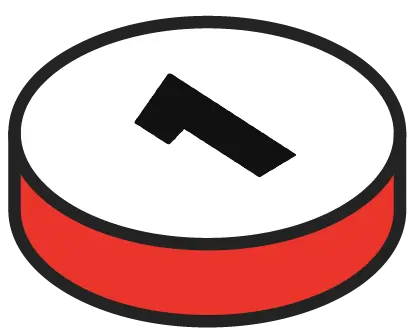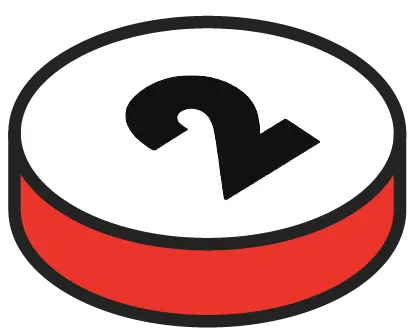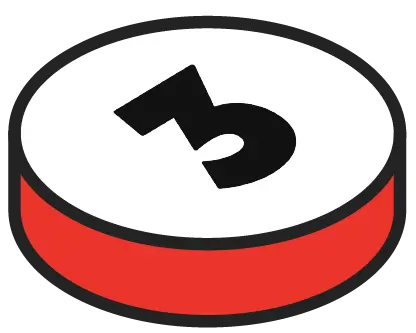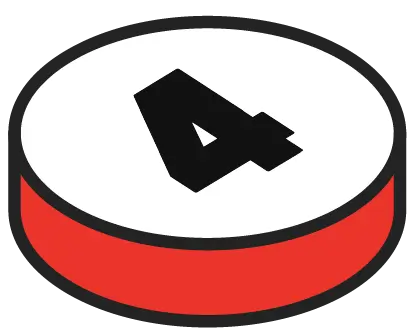[et_pb_section fb_built=”1″ _builder_version=”4.16″ custom_padding=”||0px|||” global_colors_info=”{}” theme_builder_area=”post_content”][et_pb_row _builder_version=”4.16″ background_size=”initial” background_position=”top_left” background_repeat=”repeat” custom_padding=”8px|||||” global_colors_info=”{}” theme_builder_area=”post_content”][et_pb_column type=”4_4″ _builder_version=”4.16″ custom_padding=”|||” global_colors_info=”{}” custom_padding__hover=”|||” theme_builder_area=”post_content”][et_pb_text _builder_version=”4.27.4″ background_size=”initial” background_position=”top_left” background_repeat=”repeat” width=”100%” custom_padding=”|||1px||” global_colors_info=”{}” theme_builder_area=”post_content”]
Lean Management is a process optimization method designed to improve business performance by eliminating waste and maximizing customer value. Developed in the automotive industry, its pragmatic and effective approach has spread to many other sectors.
In a context where quality, resource management, and productivity are crucial, adopting Lean Management helps improve work organization, optimize production flows, and increase profitability. This article will explore the definition of Lean, its origins, its differences with Lean Six Sigma, and its benefits for businesses.
What is Lean Management?
Lean Management is based on a systematic approach to improving processes by reducing unnecessary tasks. By focusing on value-added activities, it enables the optimization of services and products while strengthening team performance.
This approach, originating from the automotive industry, is now used in various sectors such as healthcare, logistics, and services. Its goal is to ensure better resource management and cost reduction without compromising quality.
Definition and Objectives of Lean Management
Lean Management is a continuous improvement method that focuses on optimizing processes to increase performance and eliminate waste. Its fundamental principle is to maximize value while reducing unnecessary operations.
Its objectives include improving workflow, eliminating recurring issues, and establishing an efficient organization. For example, a manufacturing company can use it to reduce waiting times and improve product quality by adjusting its production steps.
Origins and Evolution of Lean Management
Lean Management has its roots in the Toyota Production System (TPS), developed in Japan in the 1950s. Initially designed for the automotive industry, it aimed to eliminate waste and ensure a smooth production flow through principles like Just-in-Time. Over time, this approach has expanded to other sectors, such as supply chain, public sector, and services. Today, Lean Management is used in various contexts, ranging from project management to administrative process optimization, with a central goal: improving efficiency by reducing inefficiencies.
Differences between Lean Management and Lean Six Sigma
Lean Management and Lean Six Sigma are often associated but differ in their approach. Lean Management focuses on process optimization and waste elimination through tools like 5S, Kaizen, and Kanban. On the other hand, Lean Six Sigma aims to reduce variability and improve quality by relying on statistical analysis and the DMAIC methodology. While Lean is applied across all sectors, Lean Six Sigma is particularly used for complex processes requiring high precision.
Why Adopt Lean Management in Business?
Lean Management is an essential approach for improving business performance. By rethinking processes, it optimizes resource management and enhances customer satisfaction.
Improving Performance and Reducing Waste
Lean Management reduces costs by eliminating unnecessary tasks and optimizing production flows. By implementing tools like 5S or Kanban, companies streamline their work and reduce wasted time.
An infographic illustrating the difference before/after Lean implementation shows that production times decrease, quality improves, and project management becomes more efficient.
Increasing Profitability and Customer Satisfaction
Through process optimization, Lean Management helps reduce production costs and improve profitability. Better resource management results in shorter lead times and improved product quality.
For example, a company that adopted Lean reduced manufacturing defects by 30%, thus enhancing the customer experience. By reducing waiting times and optimizing services, it builds customer loyalty while cutting expenses.
Impact on Productivity and Company Culture
Lean Management also transforms company culture by involving teams in a continuous improvement process. It encourages proactive problem management and better work organization.
Companies that have adopted this method report a 20% increase in productivity, thanks to better task distribution and reduced errors. Lean fosters employee autonomy and strengthens collaboration within teams.
The 5 Core Principles of Lean Management
Lean Management is based on five essential principles that help optimize performance and eliminate waste.
🔵 Identify the value for the customer
The goal of Lean is to maximize value for the customer by eliminating unnecessary tasks. It is essential to understand what is truly expected in order to align products and services with their needs.
🔵 Map the value stream
Value Stream Mapping (VSM) is a method used to identify steps that create value and those that generate waste. For example, analyzing production processes helps reduce waiting times and improve flow management.
🔵 Create a seamless workflow
An efficient workflow ensures that each task is carried out without interruption. By eliminating bottlenecks and streamlining production, a company can improve performance while reducing unnecessary inventory.
🔵 Create a continuous workflow
An efficient flow ensures that each task follows seamlessly without interruption. By eliminating bottlenecks and streamlining production, a company can improve its performance while reducing unnecessary inventory.
🔵 Strive for continuous improvement (Kaizen)
Kaizen, or continuous improvement, encourages teams to identify and solve problems on an ongoing basis. This approach is based on concrete, progressive actions to improve quality and productivity.
Key Tools of Lean Management
Lean Management relies on several tools to optimize process management and improve industrial performance.
Just-in-Time (JIT) and Kanban
Just-in-Time (JIT) aims to produce only what is needed, when it is needed, in order to limit inventory and optimize flows. Kanban, a visual task management system, tracks the progress of production steps in real time.
The 5S Method for an Efficient Work Environment
The 5S method is based on five principles: Sort, Set in Order, Shine, Standardize, and Sustain. It improves work organization and reduces time wastage. A practical example is reorganizing a production workshop to avoid unnecessary movements.
Value Stream Mapping (VSM) to Visualize Flows
VSM maps a company’s processes to identify waste and optimize production flows. An industrial company can use it to reduce waiting times and improve the quality of delivered products.
Kaizen Approach for Continuous Improvement
Kaizen relies on small, continuous improvements made by teams themselves. A common example is the regular review of work processes to identify and correct inefficiencies.
Pareto Diagram and Root Cause Analysis
The Pareto diagram highlights the major problems affecting a company’s performance. Paired with root cause analysis (5 Whys), it helps identify and eliminate critical factors influencing quality and productivity.
The 8 types of waste to eliminate with Lean.
Lean Management identifies seven main sources of waste to eliminate in order to improve efficiency.
➡️ Overproduction: Producing more than demand leads to unnecessary costs.
➡️ Waiting times: Delays between production stages slow down organization.
➡️ Unnecessary transport: Moving products or materials with no added value wastes time.
➡️ Excessive inventory: Too much stock ties up capital and reduces flexibility.
➡️ Unnecessary movement: Operator movement slows down workflow.
➡️ Defects and rework: Errors require correction and reduce quality.
➡️ Over-quality: Adding unnecessary steps or functions increases costs without adding value.
➡️ Under-utilization of talent: Poor use of team skills limits innovation.
Implementing Lean in Business
Adopting Lean Management in a company requires a structured approach and strong team involvement. It’s not just about applying tools but transforming the organizational culture by integrating a continuous improvement mindset. Following a well-defined process ensures effective and sustainable transition.
Key Steps for Successful Implementation
 Process analysis: Observe existing flows and identify inefficiencies.
Process analysis: Observe existing flows and identify inefficiencies. Identify waste: Map unnecessary tasks to be eliminated.
Identify waste: Map unnecessary tasks to be eliminated. Deploy Lean tools: Integrate appropriate methods (5S, Kanban…).
Deploy Lean tools: Integrate appropriate methods (5S, Kanban…). Train teams: Raise awareness and involve employees in the approach.
Train teams: Raise awareness and involve employees in the approach. Monitoring and continuous improvement: Regularly adjust processes to guarantee performance.
Monitoring and continuous improvement: Regularly adjust processes to guarantee performance.
Concrete Examples of Companies Adopting Lean
In the automotive industry, Toyota revolutionized its production system with the Toyota Production System (TPS), reducing inventory and optimizing production flows. By applying Just-in-Time and Kaizen, the company significantly improved profitability and product quality.
Another example is a hospital that used Lean Management to improve emergency management. By optimizing waiting times and reorganizing teams, it reduced the average patient handling time by 30%, while improving patient and staff satisfaction.
Challenges and Common Mistakes to Avoid
⚠️ Resistance to Change: Team buy-in is essential. Lack of communication and training can hinder Lean implementation.
⚠️ Improper Tool Adaptation: Applying Lean methods without adapting them to the company’s specific context can lead to ineffective results.
⚠️ Lack of Monitoring: Without regular oversight, achieved gains may be lost in the long term.
Lean Management and Digital Transformation: Towards a More Efficient Industry
The rise of digital technologies is revolutionizing Lean Management implementation. Connected technologies allow companies to track performance in real time and improve operational efficiency.
The Evolution of Lean with New Technologies
The integration of automation, the Internet of Things (IoT), and intelligent systems allows smoother production flow management. For example, IoT sensors continuously monitor machine status, reducing downtime through predictive maintenance.
The Impact of Connected Solutions on Industrial Productivity
Digital solutions enable real-time measurement and adjustment of production processes. For instance, using digital dashboards helps quickly identify deviations and respond immediately to anomalies.
The Role of Digital Tools for More Effective Lean
Specialized software facilitates Lean application by automating tasks like resource planning or tracking performance indicators (KPI). The combination of Lean and digitalization results in faster and measurable outcomes.
Teeptrak’s Approach to Lean Management
Our Solutions for Performance Monitoring and Optimization
Teeptrak offers connected tools that allow real-time analysis of equipment performance and identification of waste. With intelligent sensors, it’s possible to track machine efficiency and optimize production processes.
How We Help Companies Reduce Waste and Maximize OEE
Our solutions help reduce unplanned downtime, optimize production time, and improve Overall Equipment Effectiveness (OEE). For example, a manufacturing company increased its efficiency by 15% by adjusting its processes after analyzing data collected by Teeptrak.
[/et_pb_text][et_pb_text _builder_version=”4.27.4″ _module_preset=”default” global_colors_info=”{}” theme_builder_area=”post_content”]
FAQ – Answers to Frequently Asked Questions about Lean Management
What is the principle of Lean Management?
Lean Management is based on continuous improvement of processes to reduce waste and maximize customer value. It aims to optimize resource management to increase performance.
What are the 8 wastes of Lean?
The 8 wastes identified by Lean Management are:
Overproduction: producing more than the actual demand.
Waiting time: delays between production stages.
Unnecessary transport: excessive movement of materials or products.
Excessive stock: unnecessary accumulation of goods.
Unnecessary movement: non-optimized movement of employees.
Defects and rework: errors requiring correction or reworking.
Over-quality: implementation of superfluous steps or functionalities, increasing costs without adding value.
Under-utilization of talent: not fully exploiting employees’ skills.
[/et_pb_text][/et_pb_column][/et_pb_row][/et_pb_section]









